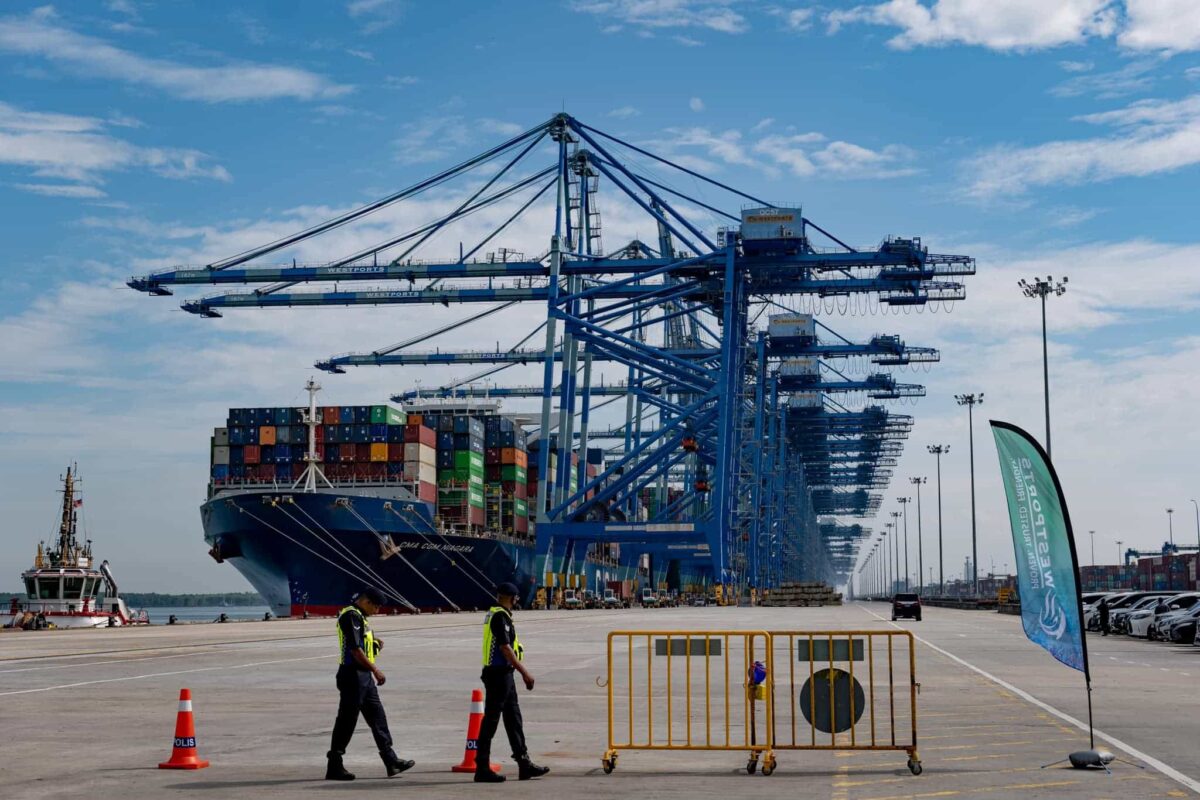
Despite nearly two decades of lofty declarations and frameworks such as the Asean Economic Community, intra-Asean trade remains sluggish as it hovers below the 25 per cent mark, a figure economists attribute to persistent non-tariff barriers (NTBs), outdated infrastructure, and entrenched bureaucratic hurdles.
However, as global supply chains shift amid ongoing geopolitical tensions, especially the United States-China trade war and the lingering impact of tariffs imposed by US President Donald Trump, this enduring weakness in trade among Asean members may finally be poised for change.
Already, Asean nations are beginning to reconsider their overreliance on developed economies.
Economist Prof Emeritus Barjoyai Bardai said US tariffs might have served as a wake-up call for Asean, one of the fastest-growing regions in the world.
“Trump’s tariffs exposed how vulnerable developing countries like ours are to unilateral policy shifts,” he told Media Selangor.
“Malaysia never really imposed any duties on US goods, yet we were still targeted. That has led many Asean countries to rethink their trade strategies and look inwards.”
Barjoyai added that historically, Asean nations have prioritised exports to the US, Europe, and more recently, the Middle East, while viewing fellow members as either too similar in economic structure or lacking in purchasing power.
“Even Indonesia, despite its large population, was once considered a less affordable market. Intra-Asean trade was largely confined to agricultural goods.
“Malaysia, for instance, imports rice from Thailand and Vietnam, but there’s been minimal movement of manufactured goods like electronics or semiconductors within the bloc,” he said.
With the global economy becoming more fragmented and vulnerable to external shocks, such an approach is increasingly untenable.
Echoing Barjoyai’s views, seasoned economist Samirul Ariff Othman said the problem lies less in economic similarity and more in practical barriers such as weak infrastructure and fragmented logistics systems.
“The real issue lies elsewhere: infrastructure gaps, border delays, and inconsistent logistics quality.
“For instance, It’s easier, faster, and sometimes even cheaper to ship goods from Malaysia to Europe than to Laos or the Philippines.
“Many land borders, such as between Thailand and Myanmar or Indonesia and Malaysia (via Kalimantan), suffer from poor connectivity and underdeveloped trade facilitation systems,” said Samirul.
While over 99 per cent of tariffs among the bloc’s largest economies — Indonesia, Malaysia, Thailand, the Philippines, Vietnam, and Singapore (dubbed the Asean-6) — have been eliminated under the Asean Free Trade Area, Samirul said the gains have been offset by a surge in NTBs.
These include mismatched safety and product standards, slow customs clearance, manual processing, and a lack of digital integration, all of which raise costs and hamper small businesses.
Both economists agreed that the missing ingredient is not vision, but political will.
Barjoyai pointed to Singapore as an early adopter of a regional trade model, importing from neighbouring countries, repackaging goods, and exporting to the West.
While this helped Singapore thrive, other Asean countries largely followed the same outward-looking approach, neglecting the bloc’s internal trade potential.
“That’s beginning to change. Malaysia, Indonesia, Thailand, and Vietnam have become upper-middle income countries. Asean is no longer just a bloc of producers, it’s a rapidly growing consumer market.”
To move the needle, both experts stressed the need for more than mindset shifts.
Samirul proposed practical tools such as barter systems and local currency settlements to ease trade friction and reduce banking costs.
He also urged investment in cross-border infrastructure, rail, ports, and harmonised digital systems.
“If Asean wants to move from being an idea to an engine of growth, it must focus less on declarations and more on delivery.
“That means accelerating customs reform, investing in connectivity, empowering regional SMEs, and building trust through enforceable rules.
“The question isn’t whether Asean can trade more with itself. It’s whether its governments are ready to act like they truly want it to,” Samirul said.
Source: Selangor Journal
Share: